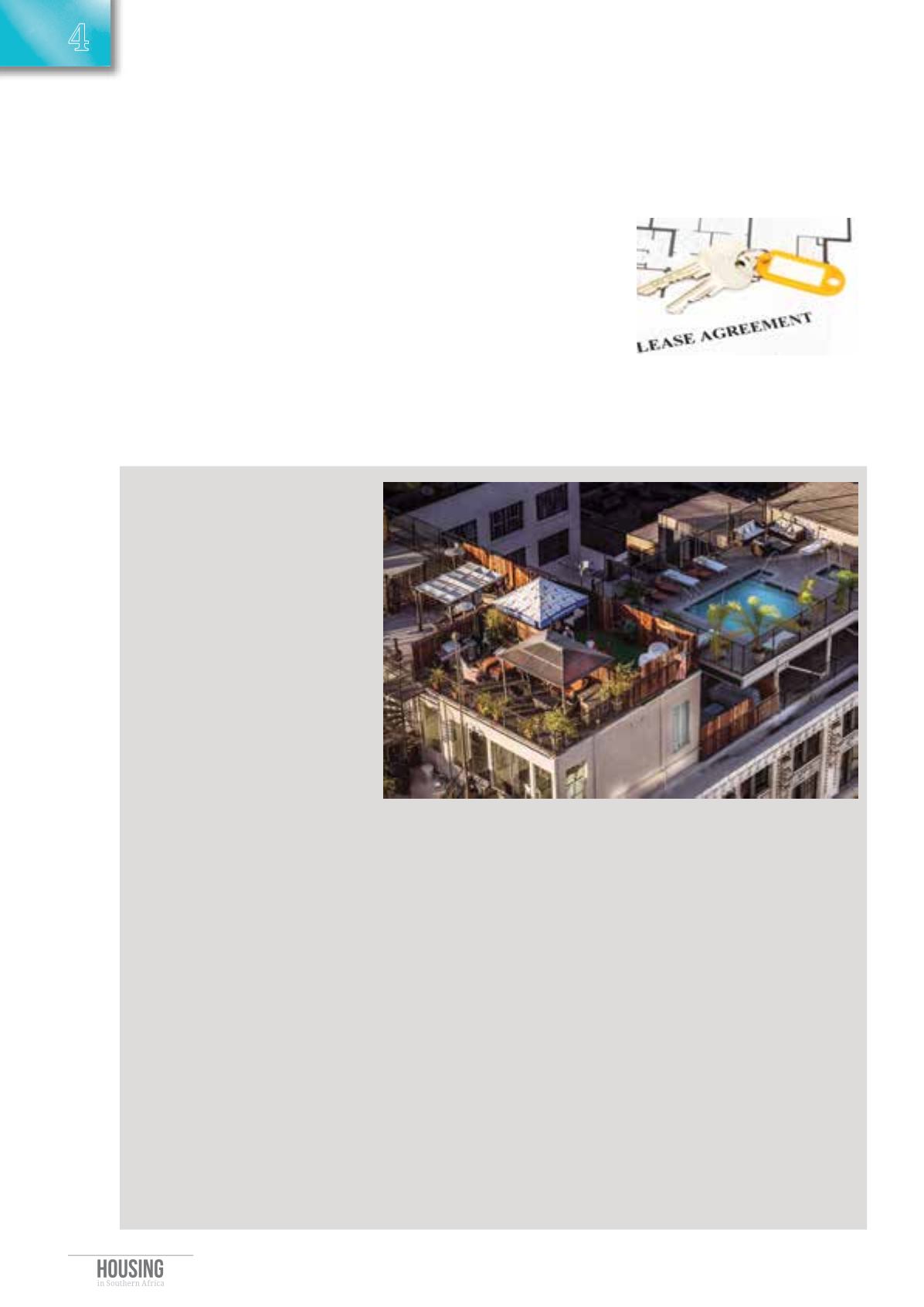

October/November 2016
News
M
ost residents have repeatedly
refused to sign lease agree-
ments. Thubelisha Homes
was responsible for the construction
of these apartments with funding
from national government. The city
did not oversee the development,
nor was it involved in the construc-
tion. Many occupants live rent-free
and refuse to enter into formal lease
agreements with the city. While the
city has continued to attend to repairs
and maintenance of a health and
safety nature.
After numerous meetings and
workshops some occupants showed
a willingness to enter into formal
lease agreements. “The city delivered
letters to each unit, this was our final
Living rent free in Cape Town
The City of Cape Town took over the management of the 705 units at
Joe Slovo Park a few years ago and has been engaging with the Joe
Slovo Committee to formalise their occupancy.
attempt to regularise this situation.
As a result, 122 occupants out of
the 705 responded. Council has now
agreed that we will write off R560 000
in rental arrears and services debt
of more than R6,9 million, including
the amount accrued up to 31 August
2016,” says Mayoral Committee
Member for Human Settlements,
Benedicta van Minnen.
She says that in a landlord and
tenant relationship both parties
have rights and responsibilities.
Rent collected contributes to the
maintenance of the housing stock.
“The amount written off will be
included in the city’s Bad Debt Provi-
sion. In future, the council’s debtman-
agement process will be enforced.”
■
S
outh African cities are undergo-
ing a transformation as urban
space is being reclaimed and
former abandoned, dilapidated,
buildings restored through innova-
tive residential developments and
contemporary architecture, which
enhance the skyline.
Urban renewal also enhances
property values and creates profit-
able opportunities for residential, re-
tail and commercial property devel-
opers and traders. It improves both
business sentiment and perceptions,
encouraging a sense of civic pride,
as well as attracting investment.
The South African CBDs’ focussed
regeneration is also a clear sign that
the country’s urban population is
continuously expanding.
A
ccording to Wayne van der Vent,
co-founder of Quoin Online, an
online property trading portal, “Ur-
ban renewal leads to a substantial
increase in overall property prices,
while urban population growth
places an increased demand on infra-
structure and transport structures.”
In Joburg’s CBD, Braamfontein
and Newtown nodes there is clear
evidence of inner-city renewal with
much of downtown upgraded and
boasting a medley of arts, entertain-
ment, retail, innovative hubs and
housing. The South African Property
Owners Association says the Johan-
nesburg commercial market showed
the highest development pipeline
ever recorded, with various flagship
developments scheduled for comple-
tion over the next two years.
Durban is also undergoing major
regeneration with reports indicating
future projects including the recla-
mation of areas such as Albert Park,
the CBD and Victoria Embankment.
In Cape Town, the CBD is changing
its entire footprint. According to Cape
Town’s Central City Improvement
District (CCID), official valuation was
almost R24 billion in the 2014/2015
financial year, an impressive growth
from just over R6,1 billion in 2006.
Game-changing trends of a grow-
ing urban population include a live-
work-play destination where the
residential population is estimated
to have grown from around 750 to
almost 7 000 over the last 16 years.
Night-time economy – the central
city has steadily been moving to-
wards a 24/7 economy over the past
five years asmore people areworking
in businesses such as call centres.
The urban population continues
to expand and an increasing number
of the residents and visitors are look-
ing for after-hour activities. There
is now a higher demand for retail
with longer trading hours, late-night
restaurants and delicatessen-type
food stores.
Office sharing – is on the rise in
the CBD as small businesses and
freelance workers continually hunt
for rent space within a larger set-up
where they can share facilities while
working in a professional environ-
ment.
“This is a situation also beneficial
to landlords looking to increase the
number of tenants.
■
Urban
renewal
trends
















